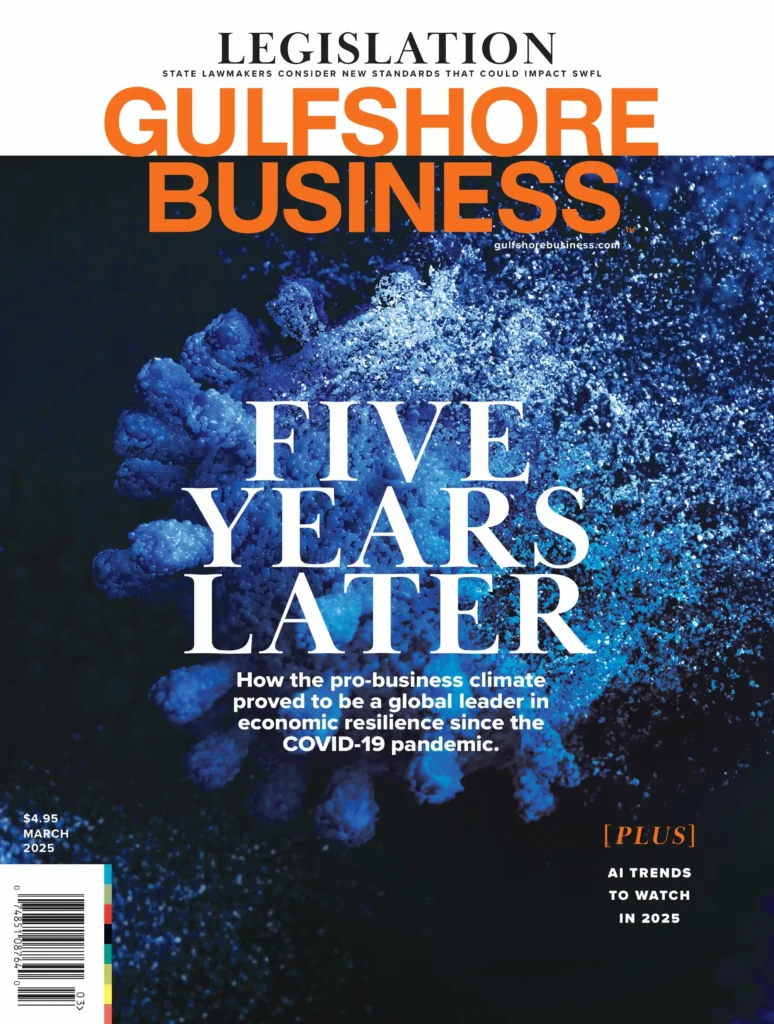Almost immediately upon its introduction, ChatGPT and other forms of generative artificial intelligence quickly demonstrated the ability to create written content, images, artwork and even music. Since then, a number of national and direct-to-consumer brands have generated advertising campaigns using artificial intelligence, leading some to believe it may one day eliminate the need for advertising agencies. However, far from putting agencies out of business, advertising creatives are instead finding new ways to put artificial intelligence to work.
“[ChatGPT] has the potential to enhance our creative output. We are using it to push our envelope of creative copywriting; making sure that we’re putting out the best version of copy,” says Peggy Wilson, president and CEO of Wilson Creative Group, a full-service advertising agency in Naples. “It’s a thought starter for us as well as a brainstorming tool. It’s almost like there’s another person at the table who’s helping us along, making our work the best it possibly can be. We’re appreciating what it’s putting back out to us and bringing to us the sort of personality and style that we’re looking for.”
Though it can augment her agency’s creative work, Wilson said ChatGPT is just one of many tools used in her firm’s workflow. It may be a helpful resource, she said, but ChatGPT can’t replace the human element.
“[Our clients] hire us for marketing services. They’re not hiring us for AI prompt capabilities. So, it’s one factor in many tools that we use for providing those marketing services,” Wilson says. “We’re plugging it in a variety of ways, whether that’s social media, content marketing, public relations or print advertising. There’s a great deal that ChatGPT can’t do, and we pick up where it leaves off. This all comes down to talent and the marketing instincts to know what is the best move to make for our clients.”
In addition to enhancing creativity, advertising agencies also are utilizing artificial intelligence to expand what they provide their clients. And, while it may sound counterintuitive, agencies using AI to produce more work can help their clients spend less.
“We significantly reduced [a client’s] production costs by being able to take a live model, film her saying three different scripts, shoot photography front and side and put her in three different outfits. We were able to upload that to a virtual video production service,” says Christopher Spiro, president and CEO of Spiro & Associates, an advertising, marketing and public relations firm in Fort Myers. “We type in the script of what we want her to say, she smiles, she pauses, we can change her look, we can change the backgrounds—and we were able to produce multiple online videos that we deployed in both e-blasts and via social media. We own it. It’s custom, it’s real and it looks excellent. But we did it for significantly less time and significantly less money.”
While Spiro said artificial intelligence allows his agency to do more for less for its clients, he doesn’t see it taking a human’s job. Instead, he believes artificial intelligence can help optimize his team to work smarter and more efficiently.
“As an ad agency, our biggest commodity is our billable time. But in order to stay competitive, some of what we’re doing has had to be streamlined,” he says. “As an example, when we want to go in and heavily manipulate a photo, I can put a staff member on it. They can manipulate that photo for four hours or I can upload it to this one [AI] website. I tell them what they’re doing, it costs 10 bucks and I have it back the next morning, freeing up one of my senior art directors to be out there billing out on our hourly rate.”
Spiro and Wilson both agree that artificial intelligence will continue to grow and improve as an asset to creative work. However, while AI can use its existing database to create, they also agree it may never be able to re-create the emotion and intelligence a human can deliver.
“Artificial intelligence is being more widely adopted. There are better tools, but also higher standards we’re setting all the time. If we’re not careful and wise about how we’re using these tools, brands can begin to look and sound awfully homogenized and the differentiators agencies bring to the table must be better and more creative,” Wilson says. “It’s up to agencies to remind their clients of the importance of maintaining a unique brand and their unique differentiators because otherwise, you’ll all look, feel and sound exactly the same. That’s the difference between what everybody [with AI] can do versus what an ad agency can provide.”





